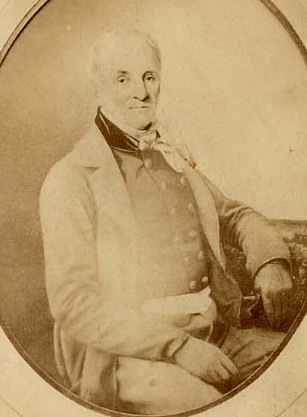Geologist and science writer Nina Morgan discovers how a geologist saved the skin of the King of France

The career of George William Featherstonhaugh (1780-1866, pron. ‘Fanshaw’) was nothing if not colourful. Born in London, and after a failed career in commerce, he emigrated to the USA in 1807 where he worked to promote the application of scientific principles to agriculture. He also played a role in the establishment of the first successful railway in the United States, which ran between Schenectady and Albany in New York.
WILLIAM SMITH
When he returned to England in 1826 to research railway developments he met William Smith (1769-1839), who instructed him in the principles of geology. This meeting seems to have marked an epiphany in Featherstonhaugh's working life. He was elected a fellow of the Geological Society of London, abandoned his work on agriculture and railways, and concentrated on geology. He returned to the United States in 1828, and in 1834 - with the support of Roderick Murchison (1792-1871) - won an appointment as a government geologist in the United States. Featherstonhaugh went on to survey and report on vast areas of America, covering states and territories ranging from Arkansas to parts of Wisconsin, Minnesota, North Carolina and neighbouring states. Only the withdrawal of funding seems to have prevented him from completing a geological map of the United States.
In 1839 his focus again changed, and he drew on his mapping skills to survey disputed territory between the United States and Britain on the border between Maine and New Brunswick. This apparently gave him a taste for the diplomatic life, and he successfully campaigned to become the British Consul in La Havre, France. He took up the post in 1844, and for a few years enjoyed a quiet and congenial career.
REVOLUTION
Then, in 1848, the February Revolution hit France, forcing King Louis Philippe to follow his predecessor, Charles X, into exile in England - and enabling Featherstonhaugh to draw on both his diplomatic and geological skills. As Roderick Murchison recalled:
"In the French revolution of 1848, when Louis Philippe fled from Paris and was hid in a cottage with Queen Amelie[sic] on the south bank of the Seine opposite to Havre, it was Featherstonhaugh, the British Consul at Havre, who managed to get the family of 'Mr. Smith' over by night, and popped them into a British steam-packet. Even in this act the Consul was the geologist, for he passed off the ex-King as his uncle, William Smith, the father of English geology!"
Luckily for all concerned, biometric passports had not yet been invented, and none of the immigration officials realised that the father of English geology had died nine years earlier!
Acknowledgement
Sources for this vignette include
The Life of Sir Roderick Murchison by Archibald Geikie; the entry for George William Featherstonhaugh by Robert Stafford in the Oxford Dictionary of National Biography, and the Wikipedia entries for Louis Philippe and the 1848 revolution.
- If the past is the key to your present interests, why not join the History of Geology Group (HOFF). For more information and to read the latest HOGG Newsletter, visit the HOGG website at: www.historyofgeologygroup.co.uk, where you'll also find abstracts for the talks and posters presented at the Conference on Geological Collectors and Collecting, April 2011 available free to download as a pdf file.
*Nina Morgan is a geologist and science writer based near Oxford.